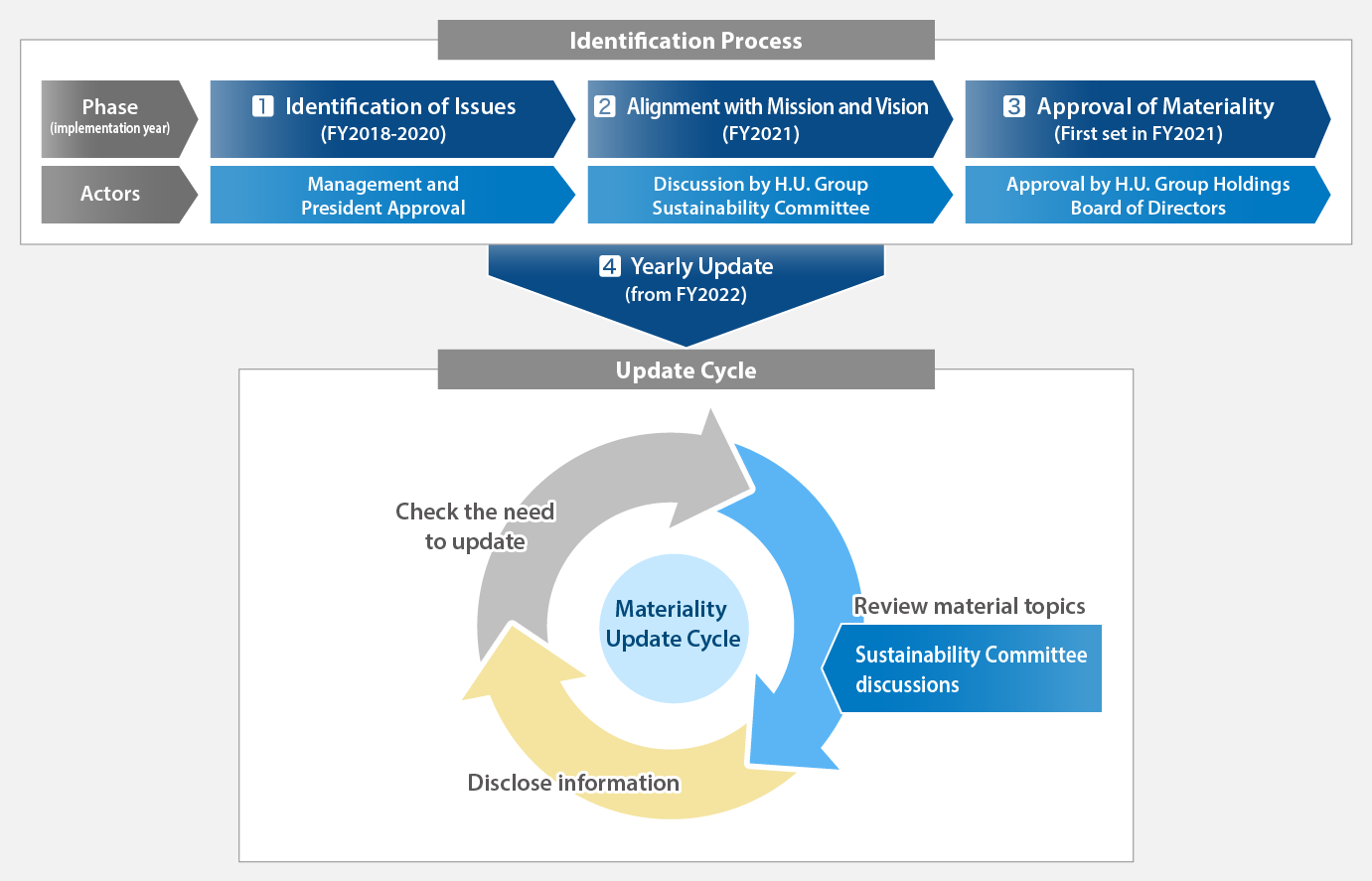Sustainability
Materiality
In accordance with the idea of dynamic materiality *1, the Group reviews the materialities and determines whether or not to update them while taking into account changes in the external environment, the state of our business, and the progress of our efforts to address each issue.
Materiality Identification Process and Update Cycle

Actions in Each Phase
Phase 1: Identify issues (FY2018-2020)
Based on the materiality established in fiscal 2018, and mainly taking into account ISO 26000 and GRI Standards, we identified issues from the perspective of our stakeholders in accordance with our medium-term plan, which addresses changes in the business environment. Our management engaged in discussions accordingly and, following approval by the President and Group CEO, we disclosed our new materiality in the integrated report 2020.
Phase 2: Align with Mission and Vision (FY2021)
In order to upgrade the issues identified, the H.U. Group Sustainability Committee created a materiality aligned with our Mission and Vision that are particularly important in terms of “importance to the H.U. Group” and “importance to long-term investors” such as financial reporting, innovation opportunities, and the impact of regulations and industry norms (supporting double materiality *2).
Phase 3: Approve materiality(First set in 2021)
The Board of Directors of H.U. Group Holdings discussed and coordinated the Group's material issues and approved them for the first time.
Phase 4: Update materiality annually from 2022 onwards
We will review and update the materiality once a year, taking into account progress in addressing the issues and changes in the business environment. (supporting dynamic materiality).
In April 2023, we revised our material issues, adding human resource development. This reflects our determination that it will be important for us to focus more than ever on human resource development to achieve sustainable growth.
In FY 2025, we conducted a major revision that was timed with the formulation of the Current Medium-term Business Plan, which began in 2025, and aims to fully integrate our management plan, business plan, and sustainability materialities. We considered many different perspectives when identifying our materialities, including the Group’s philosophy and discussions held during the formulation of the Current Medium-term Business Plan. After discussions at the management level and taking into account insights gained through dialogue with shareholders and institutional investors, six materialities were identified with the approval of both the Sustainability Committee and the Board of Directors.

- : The idea that materiality is a dynamic concept and can change over time or rapidly. The concept was proposed in a joint statement of the IIRC, SASB, CDP, CDSB, and GRI.
- : The approach that emphasizes materiality from the perspectives of both investors and stakeholders. It was proposed under the “Guidelines on Non-Financial Reporting” of the European Commission.
-
Sustainability Subcommittee

